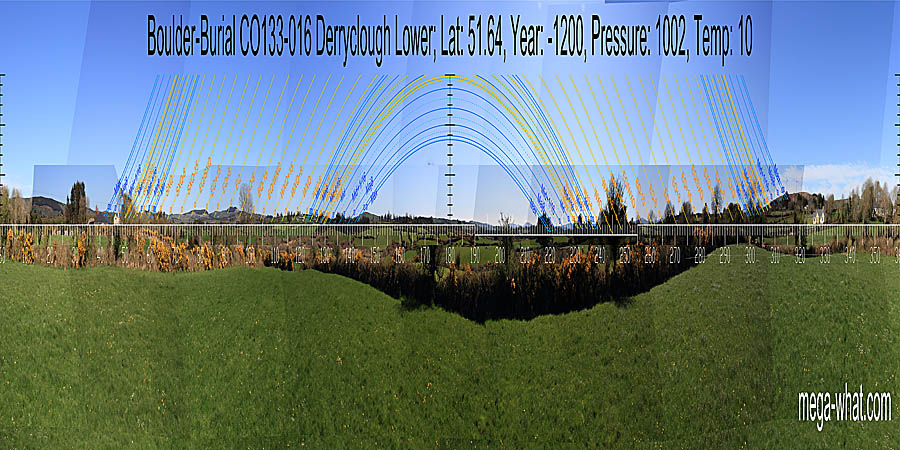 Derryclough Lower Boulder-Burial is in the valley of the Saivnose River, about 3km west of Drinagh.
Just visible from the road, with easy access along a farm track, this one has a basically triangular capstone with points E/SE, SW & NW.
It also has a support stone usefully placed as a step up to its flat top.
Derryclough Lower Boulder-Burial is in the valley of the Saivnose River, about 3km west of Drinagh.
Just visible from the road, with easy access along a farm track, this one has a basically triangular capstone with points E/SE, SW & NW.
It also has a support stone usefully placed as a step up to its flat top.South is in a slight dip on a ridge, to the left of a wide dip [Pic].
North is obscured but seems to be roughly indicated by a large dip and also the boulder itself [Pic].
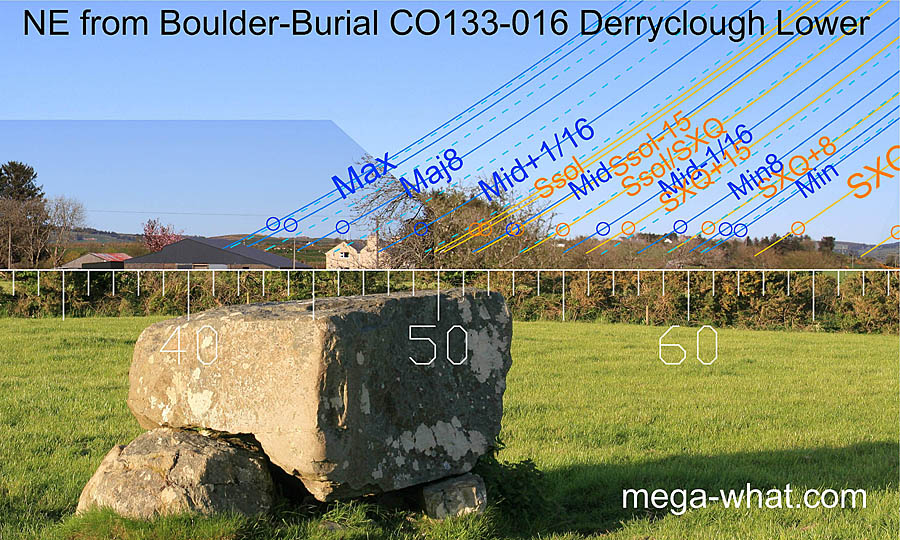 The north-east is largely obscured by vegetation but the major standstillLunistice positions vary cyclically over an 18.6 year period but are fairly static for more than a year at either end of the range
is at a hilltop.
The north-east is largely obscured by vegetation but the major standstillLunistice positions vary cyclically over an 18.6 year period but are fairly static for more than a year at either end of the range
is at a hilltop.
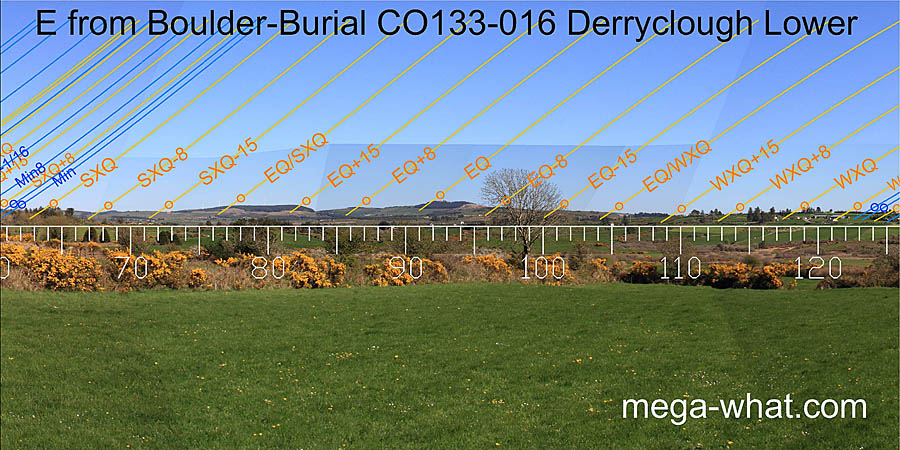 The eastern end of the boulder appears anciently broken and forms a double point.
The north branch of this indicates Carrig Fadda and the equinox, while the dip between Carrig Fadda and the next hill southwards is a half-month north of the winter cross-quarter.
The eastern end of the boulder appears anciently broken and forms a double point.
The north branch of this indicates Carrig Fadda and the equinox, while the dip between Carrig Fadda and the next hill southwards is a half-month north of the winter cross-quarter.
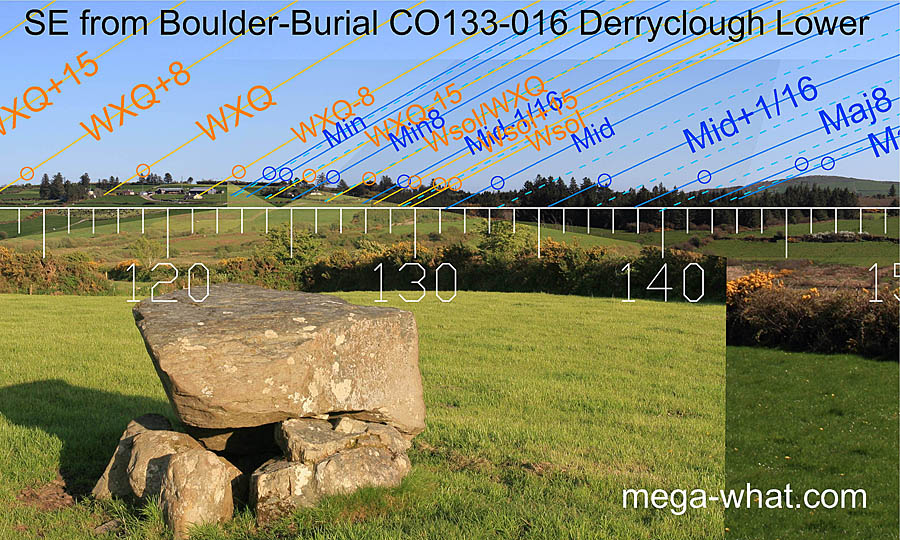 To the south-east, the cross-quarter is in the centre of a broad hilltop and the major standstillLunistice positions vary cyclically over an 18.6 year period but are fairly static for more than a year at either end of the range
is on the next hilltop. The winter solstice is in the dip between them.
To the south-east, the cross-quarter is in the centre of a broad hilltop and the major standstillLunistice positions vary cyclically over an 18.6 year period but are fairly static for more than a year at either end of the range
is on the next hilltop. The winter solstice is in the dip between them.
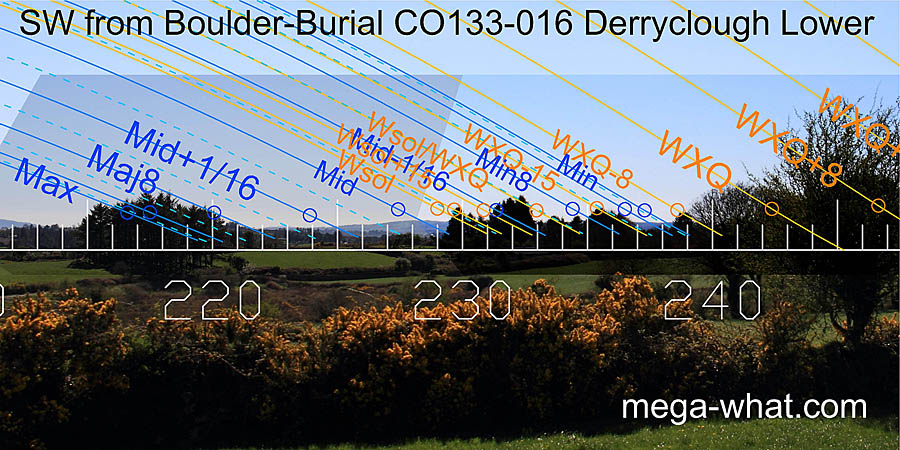 The south-west horizon is distant and hilly but trees obscure much of the lunisticeLunistices are the most northerly and southerly moons of the month. The lunar equivalent of solstices - more.
range. The hilltop of Knockonna can be seen to mark the lunar midpoint.
The south-west horizon is distant and hilly but trees obscure much of the lunisticeLunistices are the most northerly and southerly moons of the month. The lunar equivalent of solstices - more.
range. The hilltop of Knockonna can be seen to mark the lunar midpoint.
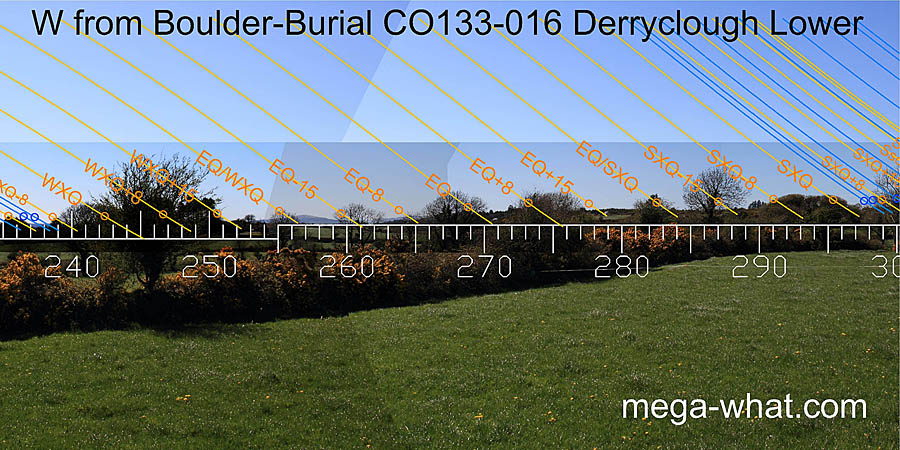 The west is also largely obscured but the equinox / summer cross-quarter midpoint is at the south basal step of Mt Kid's summit.
The west is also largely obscured but the equinox / summer cross-quarter midpoint is at the south basal step of Mt Kid's summit.
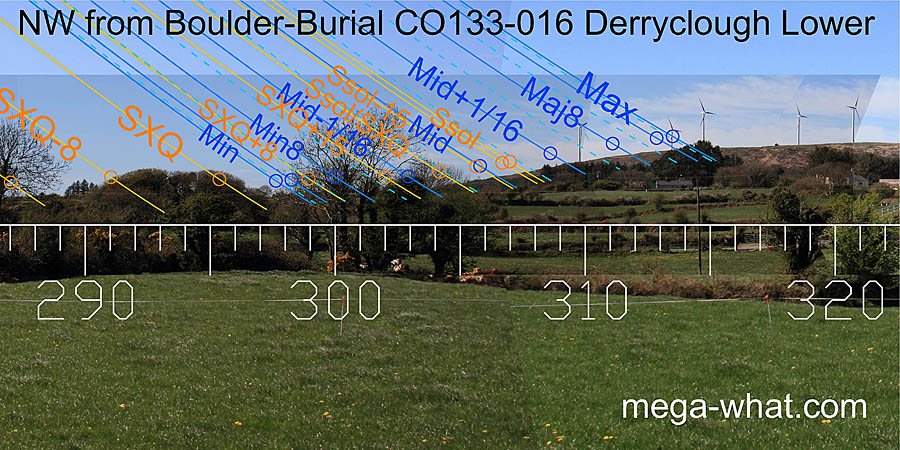 North-west is a prominent nearby hill and its western top marks the most extreme northerly moonset position.
The lunar midpoint is at a prominent break/step on its western slope and the solstice / cross-quarter midpoint is a smaller one below it.
Trees obscure the whole minor end of the lunisticeLunistices are the most northerly and southerly moons of the month. The lunar equivalent of solstices - more.
range.
North-west is a prominent nearby hill and its western top marks the most extreme northerly moonset position.
The lunar midpoint is at a prominent break/step on its western slope and the solstice / cross-quarter midpoint is a smaller one below it.
Trees obscure the whole minor end of the lunisticeLunistices are the most northerly and southerly moons of the month. The lunar equivalent of solstices - more.
range.
- Baurnahulla Boulder-Burial is 4.2km west (291°)
- Kilmore Boulder-Burials are 4.9km west (271°)
- Keamore Boulder-Burial is 5.5km south (158°)
- Burgatia Boulder-Burial is 14.1km south-east (118°)
References
- Archaeological Survey of Ireland, record details. www.archaeology.ie/archaeological-survey-ireland
- POWER, D. et al. 1992 Archaeological Inventory of County Cork, Volume 1: West Cork. Dublin: Stationary Office. p31, no.114.
